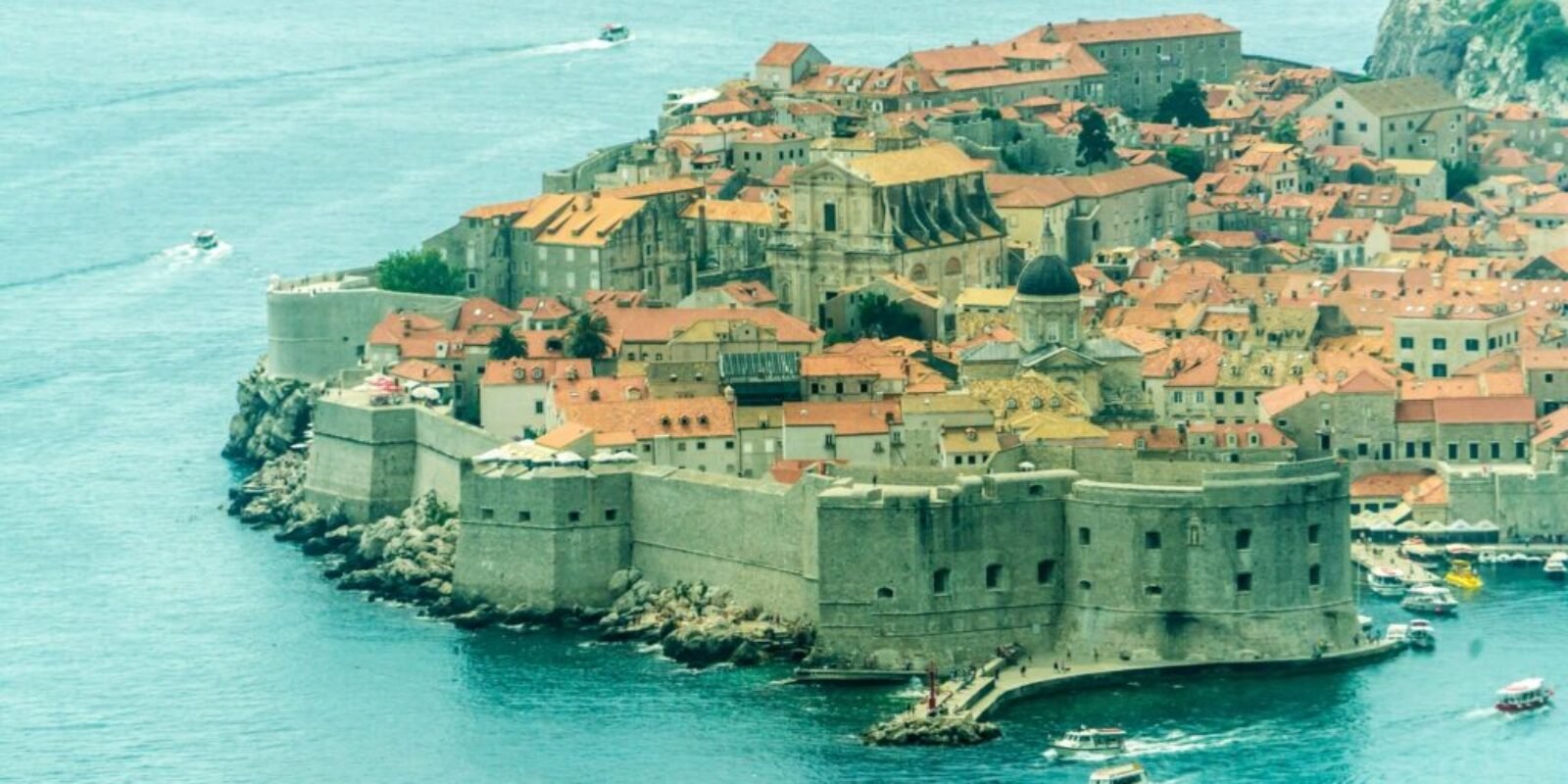Last Updated on June 27, 2025 by Julian Espinosa
Croatia has emerged as one of Europe’s most captivating destinations, and it’s no wonder why mature travelers are discovering this Mediterranean gem in record numbers. With over 21.3 million tourist arrivals in 2024, Croatia offers the perfect blend of stunning natural beauty, rich history, and warm hospitality that appeals to discerning travelers seeking both adventure and relaxation.
What makes Croatia especially appealing for those in their prime years? Picture yourself strolling through medieval streets in Dubrovnik, savoring world-class wines in Istria, or enjoying the therapeutic benefits of crystal-clear Adriatic waters. This remarkable country boasts a 1,104-mile-long Mediterranean coastline plus 1,185 islands, offering endless opportunities for exploration without the overwhelming crowds of other European hotspots.
From the cascading waterfalls of Plitvice Lakes to the Roman architecture of Split, Croatia delivers cultural richness that resonates with experienced travelers who appreciate authenticity. The country’s commitment to accessibility and comfort means you can enjoy these wonders at your own pace, whether you prefer guided tours designed for mature travelers or independent exploration.
Croatia’s appeal extends beyond its famous coastline. Recent tourism developments have enhanced infrastructure while preserving the country’s authentic charm. With excellent healthcare facilities, English-speaking locals, and a growing network of senior-friendly accommodations, Croatia provides peace of mind alongside unforgettable experiences.
Ready to discover why Croatia should be your next adventure? Let’s explore the compelling reasons that make this Balkan beauty an ideal destination for your travel bucket list.
Discover Why Croatia Should be Added to Your Bucket List
Have you been dreaming of a destination that combines stunning natural beauty with rich cultural heritage, all while offering the comfort and accessibility you deserve? Croatia delivers on all fronts, making it an increasingly popular choice for mature travelers who refuse to let age define their adventures.Croatia boasts a stunning coastline, pristine waters, and remarkable historic sites.
Welcome to the realm of Countless Isles! It’s picturesque coastline is adorned with countless islets, beckoning you to embark on an unforgettable adventure! Join us on this adventure as we uncover Croatia’s top attractions and what makes each of them extraordinary! How you order these will depend on what you like to experience when you travel but all are ‘must see’ attractions.
Prefer to listen rather than read?
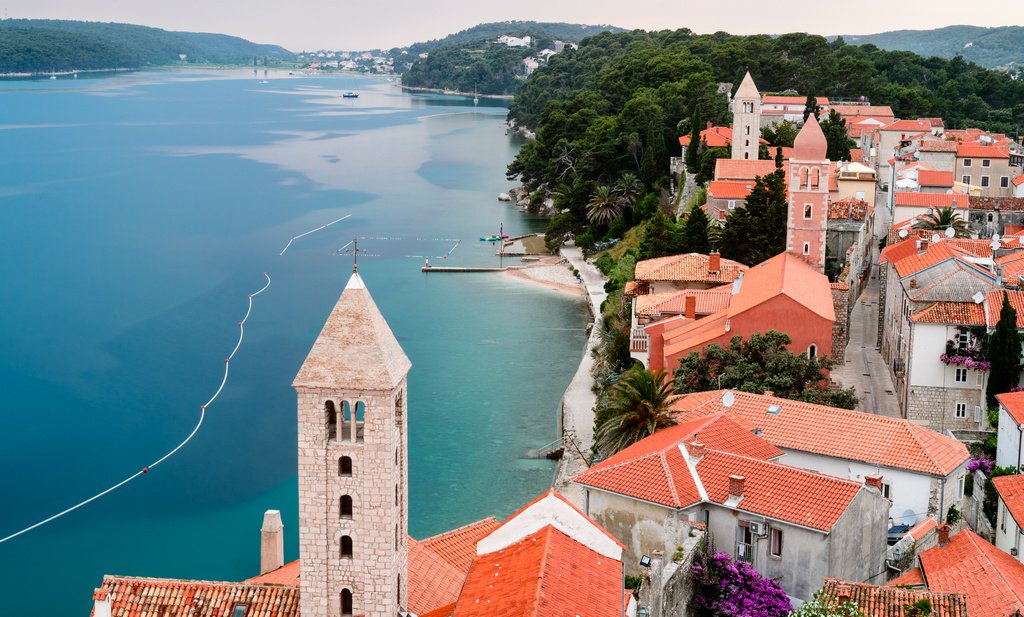
Dubrovnik Old Town –
Dubrovnik Old Town, a UNESCO World Heritage Site, stands as Croatia’s crown jewel, drawing crowds with its ancient allure. It’s an ancient city surrounded by massive stone walls and filled with narrow streets, stunning architecture, and historic landmarks.
Dubrovnik, the Gem of the Adriatic, has become a star-studded setting for the hit TV series Game of Thrones!
Plitvice Lakes National Park –
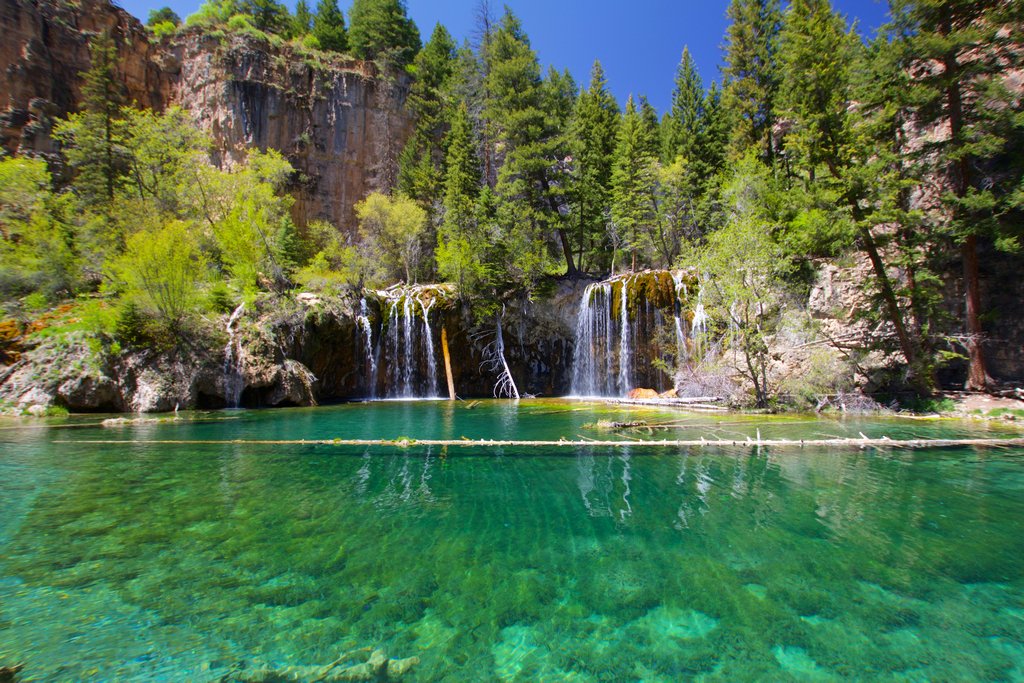
Plitvice Lakes National Park, a captivating natural paradise boasting 16 interconnected lakes and cascading waterfalls, draws millions of visitors annually. Dubrovnik’s UNESCO World Heritage Site status makes it perfect for hiking, adventure, and soaking in breathtaking scenery!
If you love hiking, consider doing the Route K Trail. Trekking across 18 kilometres over 5 to 6 hours, get ready for some of the most serene views you’ll ever encounter! You might even see a wolf, or perhaps beavers, black bears, and lynxes!
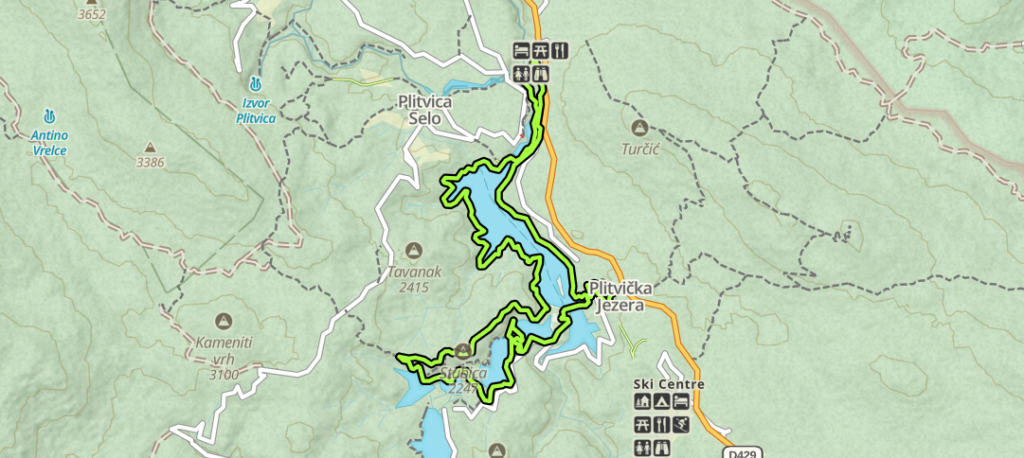
An entry fee to the park is around $50. For an enhanced hiking experience with a guide by your side, anticipate an additional fee of $50 per person.
Hvar Island –
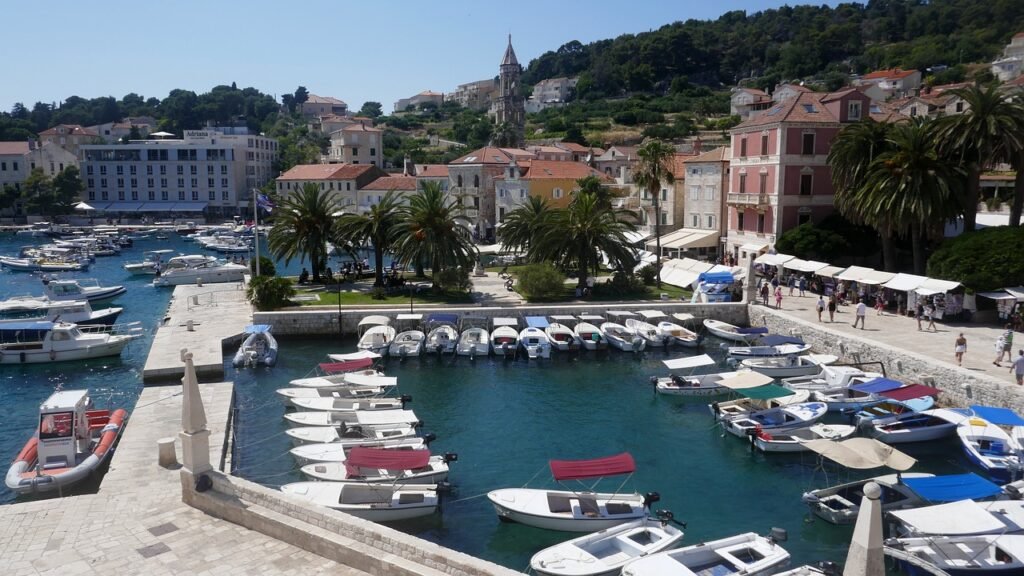
Hvar Island is one of the most beautiful islands in Croatia and is known for its crystal-clear waters, stunning beaches, and vibrant nightlife. Delve into history with iconic landmarks like the 16th-century Hvar Fortress and the St. Stephen’s Cathedral on the island.
Diocletian’s Palace –
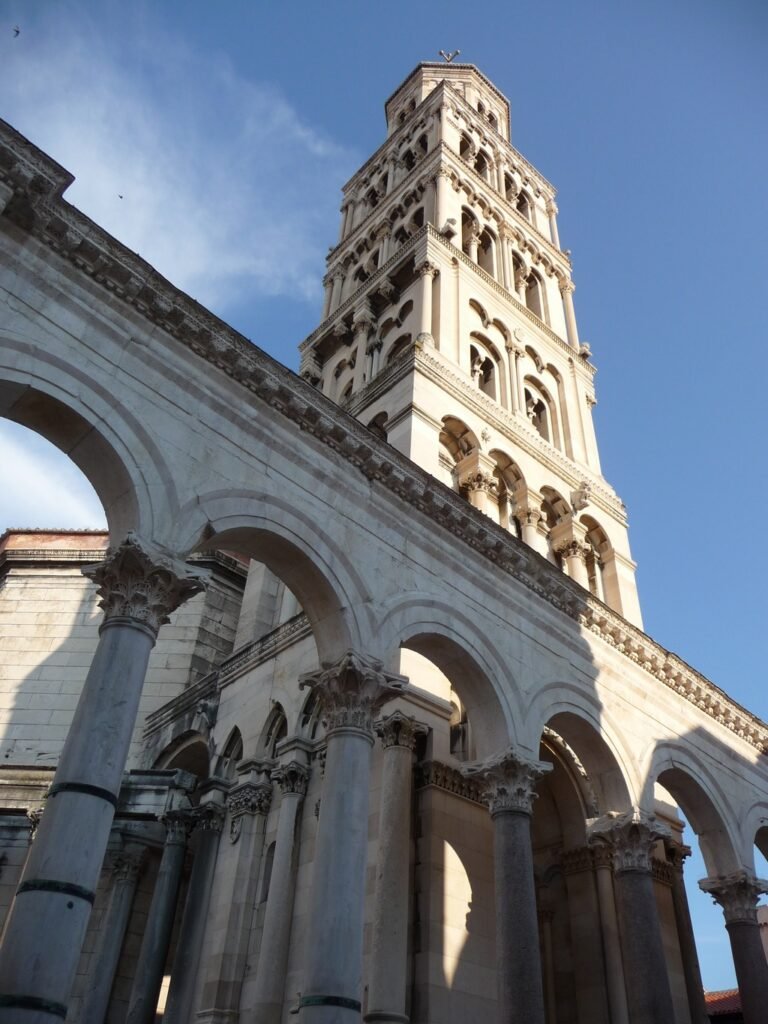
Transport yourself through time at Diocletian’s Palace, the grand ancient abode built by Roman Emperor Diocletian in the 4th century. It’s located in the city of Split and is one of the most impressive landmarks in the Croatian Republic. The palace is yet another UNESCO World Heritage Site. It’s filled with narrow streets, stunning architecture and historic landmarks.
Zlatni Rat –
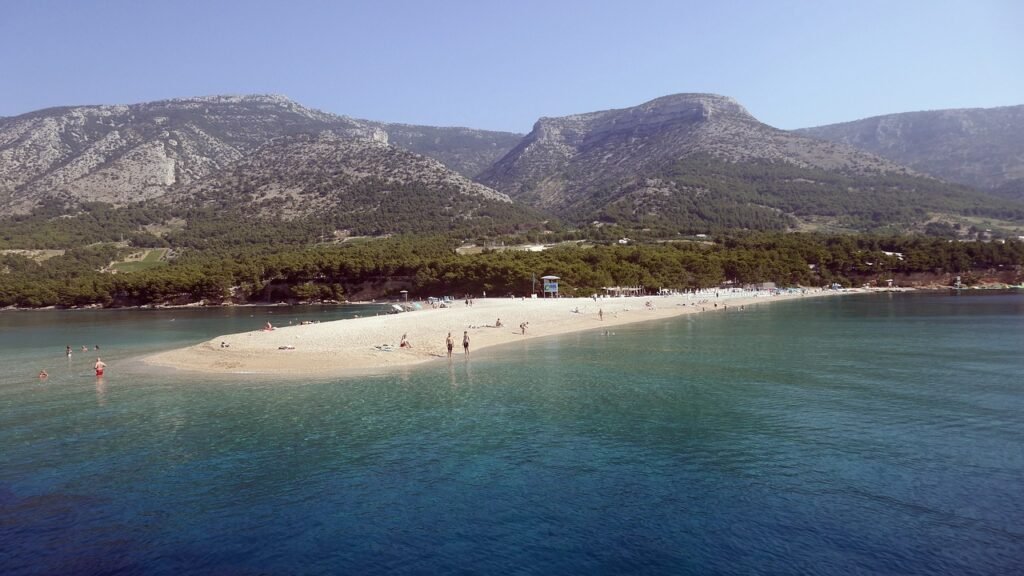
Zlatni Rat is a stunning beach located on the island of Brac. It’s known for its crystal-clear waters, golden sand, and unique shape which stretches some 700 metres. The beach is a popular destination for swimming, sunbathing, and water sports.
Pula Amphitheatre –
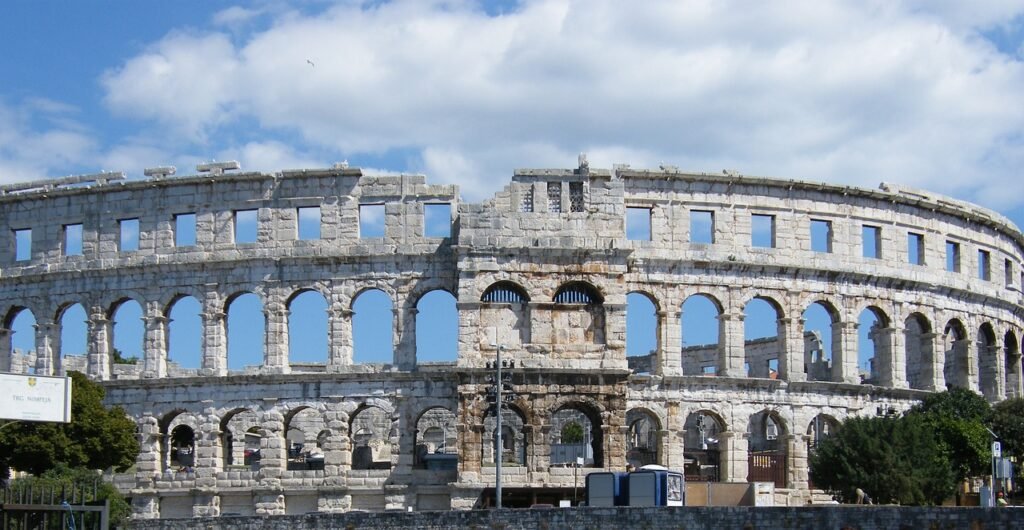
Pula Amphitheatre is an ancient Roman amphitheatre located in the city of Pula. It was built in the 1st century and is one of the six largest surviving Roman arenas in the world. The amphitheatre is a great place to explore and learn about ancient Roman history.
Krka National Park –
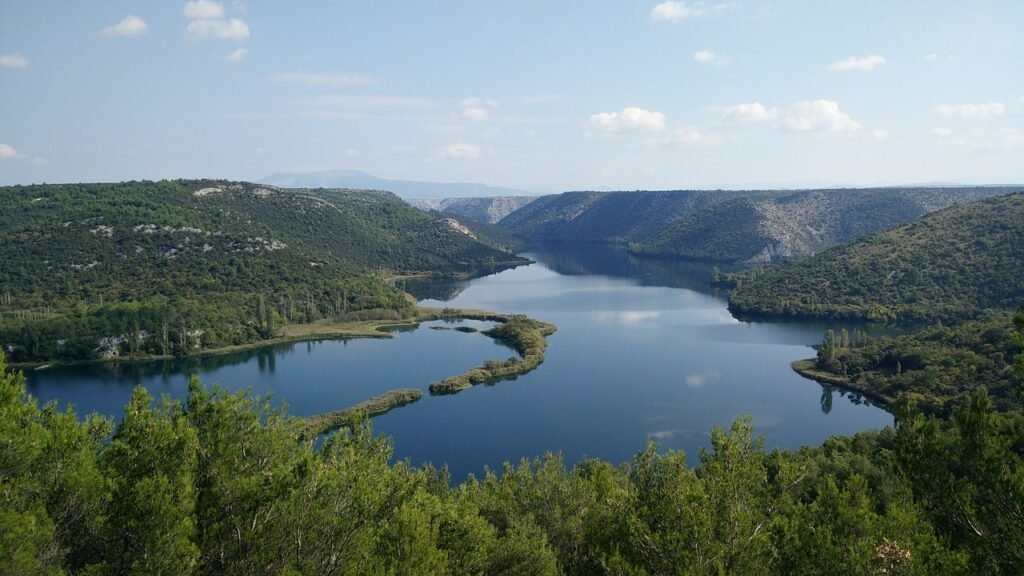
Krka National Park is a stunning natural park located along the Krka River. It’s known for its beautiful waterfalls, crystal-clear pools, and lush greenery. The park is a great place to hike, explore, and take in the breathtaking scenery.
Rovinj Old Town –
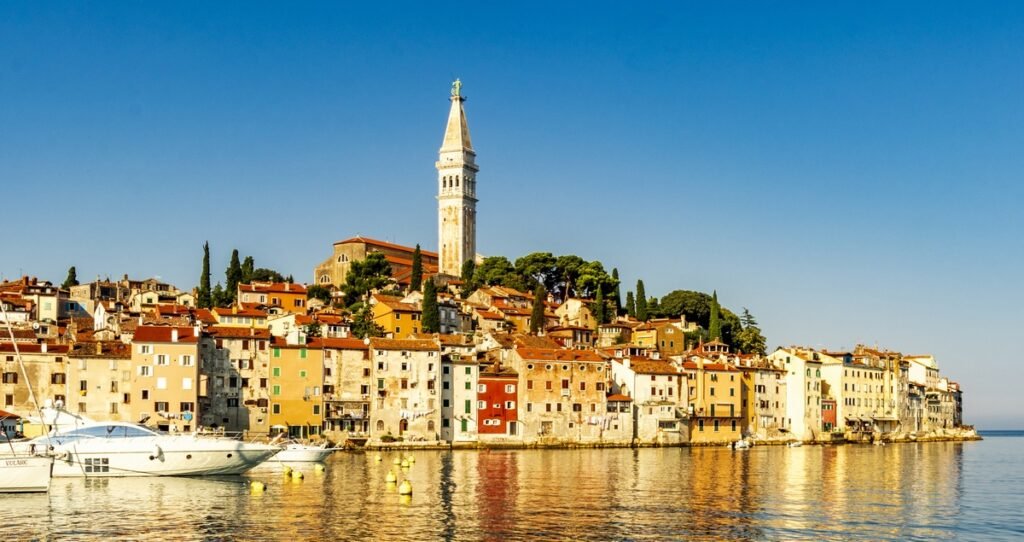
Rovinj Old Town is a charming town located on the Istrian Peninsula. It’s known for its narrow streets, stunning architecture, and beautiful harbour. The town is a great place to explore and take in the local culture.
Trakošćan Castle –
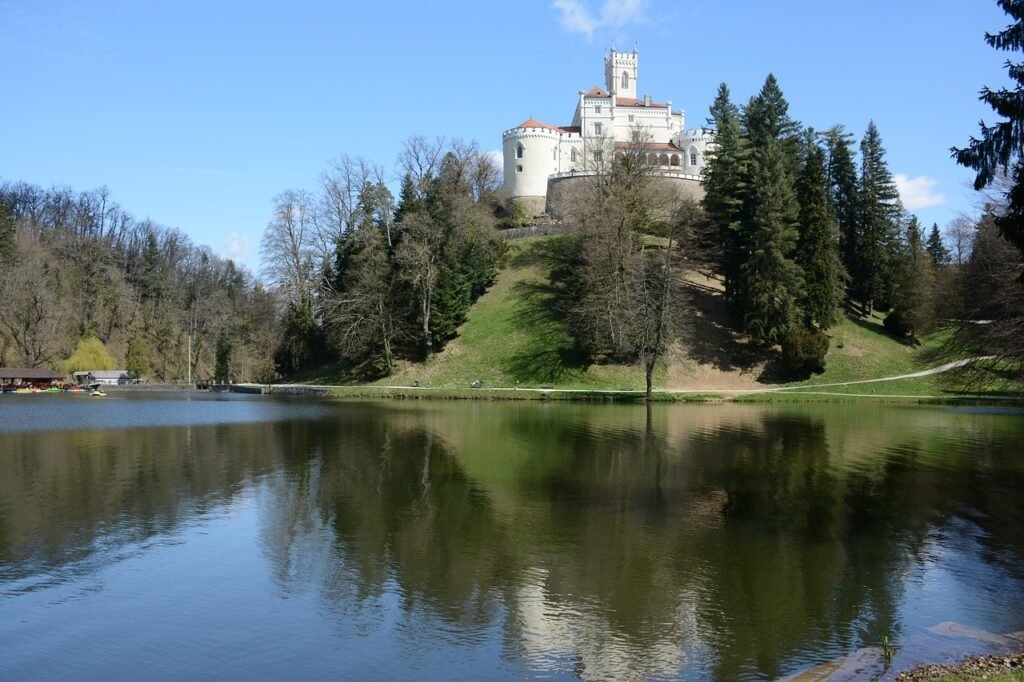
Trakošćan Castle is a stunning castle located in the Zagorje region. It was built in the 13th century and is known for its beautiful architecture and stunning gardens. The castle is a great place to explore and learn about the history of the Land of a Thousand Islands.
Kornati Islands –

Kornati Islands is a stunning archipelago located in the Adriatic Sea. It’s known for its crystal-clear waters, stunning beaches, and unique rock formations. The islands are a popular destination for sailing, swimming, and exploring.
But wait… there’s more!
The above destinations are just a sample of what you can expect when visiting Croatia. It’s a beautiful country with a rich history and stunning natural wonders. Whether you are looking to explore historic landmarks, hike through national parks or relax on beautiful beaches, Croatia has something for everyone.
Croatian History:
Croatia is in South-Eastern Europe, bordered by Slovenia, Hungary, Serbia, Bosnia and Herzegovina, and the Adriatic Sea. Its history can be traced back to the 7th century when Slavic tribes migrated to the region. The Croats, who were one of the Slavic tribes, settled in the area that is now Croatia, and the name of the country is derived from their name.
During the 9th century, it was ruled by a duke, and in 925, it became a kingdom under King Tomislav. The kingdom of Croatia existed for several centuries, but it was often under the rule of foreign powers, such as the Austro-Hungarian Empire and the Ottoman Empire. In the 16th century, the Croatian Parliament elected a Habsburg prince, Ferdinand, as king, and Croatia became a part of the Habsburg Monarchy. Under Habsburg rule, Croatia enjoyed a degree of autonomy, and the Croatian language and culture were preserved.
During World War I, Croatia was a part of the Austro-Hungarian Empire, which was defeated. After the war, Croatia became a part of the Kingdom of Yugoslavia, which was formed in 1918. However, tensions between the different ethnic groups in Yugoslavia eventually led to the breakup of the country in the 1990s.
In 1941, during World War II, Croatia was occupied by Nazi Germany, and the fascist Ustasha regime was installed. The Ustasha regime collaborated with the Nazis and carried out atrocities against Jews, Serbs, and Roma people. The Ustasha regime was defeated by the Partisans, led by Josip Broz Tito, who went on to become the leader of Yugoslavia after the war.
In 1991, Croatia declared its independence from Yugoslavia, leading to a war with Serbia. The war lasted for several years and resulted in the deaths of thousands of people. The war ended in 1995 with the signing of the Dayton Agreement, which established the current borders of Croatia. Since gaining independence, Croatia has made significant progress in terms of economic and social development. It joined the European Union in 2013, and the country’s tourism industry has grown significantly in recent years.
In terms of culture, Croatia has a rich history in literature, music, and art. Some of the most famous Croatian writers include Miroslav Krleža, August Šenoa, and Ivana Brlić-Mažuranić. Croatia has also produced several renowned musicians, such as Ivo Andrić, a Nobel Prize winner in literature, and the inventor of the necktie, which is today worn worldwide.
Croatia has a long and complex history, marked by foreign occupation, war, and political upheaval. However, the country has managed to preserve its unique culture and identity, and today it’s a thriving democracy with a bright future.
Favourite Croatian Foods
- Ćevapi – grilled minced meat sausages served in a flatbread with onions and sour cream
- Pasticada – a slow-cooked beef stew with red wine and prunes
- Zagorski Štrukli – a cheese and dough dish, similar to a dumpling or strudel
- Burek – a pastry filled with meat, cheese or vegetables
- Octopus salad – a popular seafood dish with boiled octopus, onions, tomatoes, and olive oil
Here is the recipe for Ćevapi:
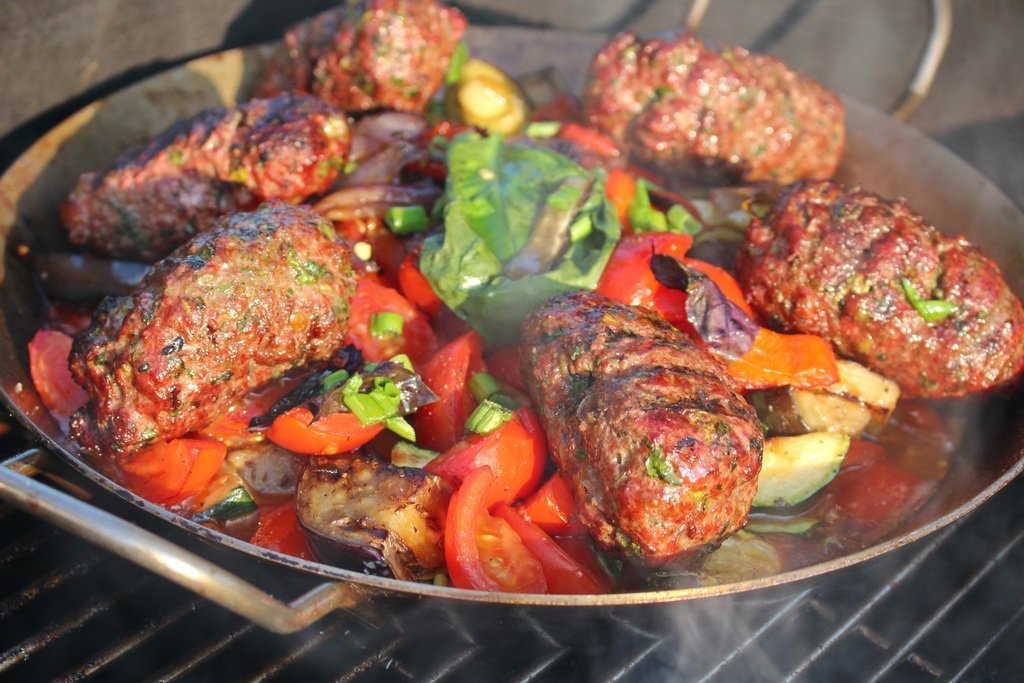
Ingredients:
- 500g ground beef or lamb
- 500g ground pork
- 1 onion, finely chopped
- 2 cloves garlic, minced
- 1 tsp paprika
- 1 tsp salt
- 1 tsp black pepper
- 1 tsp cumin
- 1 tsp baking soda
- 1/2 cup sparkling water
- Flatbread or pita
- Sour cream
Method:
- In a large mixing bowl, combine the ground beef and pork, onion, garlic, paprika, salt, black pepper, cumin, baking soda, and sparkling water. Mix well with your hands until all ingredients are evenly distributed.
- Once the mixture is well combined, form small sausage-shaped patties with your hands.
- Preheat a grill or grill pan over medium-high heat. Cook the Ćevapi for about 5 minutes on each side, or until browned and cooked through.
- Serve hot with flatbread or pita, sour cream, and chopped onions on top. Enjoy!
10 of the Best Croatian Restaurants to Visit During Your Travels

- Restaurant 360° – Ul. Andrije Kačića Miošića 1, 21000, Split – Recommended dish: Octopus with potato foam, black garlic, and pine nuts
- Dubravkin Put – Dubravkin put 2, 10000, Zagreb – Recommended dish: Slow-cooked beef cheeks with truffle puree and red wine reduction
- Pellegrini – Šibenik 22000 – Recommended dish: Adriatic seafood platter
- Bokeria Kitchen & Wine Bar – Domaldova ul. 8, 21000, Split – Recommended dish: Grilled octopus with chickpea puree and black garlic
- Nautika Restaurant – Brsalje ul. 3, 20000, Dubrovnik – Recommended dish: Black risotto with cuttlefish ink and seafood
- Meat Me – Ul. Ivana Tkalčića 33, 10000, Zagreb – Recommended dish: Dry-aged steak with truffle butter and roasted potatoes
- Konoba Batelina – Banjole 66, 52100, Pula – Recommended dish: Seafood platter with raw oysters, grilled squid, and fried sardines
- Agava Restaurant – Tkalciceva ul. 39, 10000, Zagreb – Recommended dish: Pork belly with potato puree and honey glaze
- Konoba Boba – Rovinjska ul. 9, 52210, Rovinj – Recommended dish: Grilled fish with olive oil and lemon
- Tač – Opatovina ul. 49, 10000, Zagreb – Recommended dish: Braised lamb with roasted vegetables and mashed potatoes
Croatia’s Goldilocks Climate – Not Too Hot and Never Too Cold!
Sitting as it does, on the moderating Adriatic Sea, Croatia’s climate will suit every traveller, including seniors. Even the coldest month of the year, January, has an average daytime temperature that’s quite tolerable. While the below chart is based on Dubrovnik, it’s broadly indicative of what you can expect to experience.

Of course, Croatia’s climate is defined by its diverse landscape made up of a blend of mountains, plains, forests, and an extensive intertidal zone. The country is divided into two primary climate regions – Mediterranean and Continental.
However, there are variations within these regions, such as the mountainous Dinara area, which boasts vast forest cover and an alpine climate.
The Adriatic coastline experiences a typical Mediterranean climate, characterized by hot, dry summers and mild, rainy winters. Average summer temperatures range from 26 to 30°C along the coast, 22 to 26°C in the continental region, and 15 to 20°C in the mountainous area.
Mid-winter temperatures, on the other hand, vary from 5 to 10°C along the coast, -1 to 5°C in the Continental zone, and -5 to 0°C in the mountainous region.
What Are the Best Months to Visit Croatia?
There are three ‘seasons’ for tourism so it’s essential you know what experiences you are seeking during your trip as many events and activities are weather dependent.
High Season
July and August are the most popular months to travel in Croatia. These two months are classed as high season and are consequently, the most expensive.
They are the busiest months making it harder to book everything from cruises to restaurant tables. The pluses are balmy days and nights, warm waters for swimming and numerous open-air events.
Mid-Season
May, June, September and October are the mid-season months. The weather is mild, the water is still pleasantly warm for swimming and it’s the perfect weather for adventure sports such as hiking, kayaking and sailing.
Low Season
The low season runs from November to April. The weather turns chilly and some areas experience snow. Yes, you can ski! The crowds are gone so it’s a wonderful time to explore Croatia’s history and culture but many of the seaside venues close during this period. The positive is that this is a very budget-friendly time to travel.
How to Get There?
Travelling to Croatia is an amazing adventure that you won’t want to miss. Fortunately, there are several options to choose from depending on where you’re departing from. Croatia has five international airports so there is a good chance that one of your favourite airlines is going to list Croatia as a destination.
If you’re flying from the USA, you’ll have plenty of airlines to choose from. Major carriers like Delta, United, and American Airlines offer direct flights to Zagreb and Dubrovnik. Alternatively, you can also fly to neighbouring countries like Italy or Germany and take a connecting flight to Croatia.
For those departing from London, several airlines offer direct flights to Croatia. British Airways, easyJet, and Ryanair all fly to destinations like Zagreb, Split, and Dubrovnik. You can also take a train from London to Paris and then catch a flight to Croatia from there.
If you’re travelling from Australia, your best bet is to fly to a nearby hub like Dubai, Doha, or Istanbul and then take a connecting flight to Croatia. Alternatively, you can also fly to major European cities like London or Frankfurt and take a connecting flight from there.
Lastly, if you’re looking for a unique way to travel to Croatia, you can also consider taking a cruise. Several cruise lines offer itineraries that include stops in Croatian ports like Dubrovnik and Split. This is a great option if you want to combine your Croatia adventure with other destinations in the Mediterranean.
For the more adventurous, if you are doing the ‘Grand Tour’ of Italy or Greece, you might consider travelling to Croatia by ferry. While slower than flying – and a lot less luxurious than cruising, the stunning coastline more than compensates.
No matter which option you choose, travelling to Croatia is a wondrful experience that you’ll never forget. So pack your bags and get ready for an unforgettable adventure in one of Europe’s most beautiful countries!
Summarizing Why You Need to Add Croatia to Your Travel Bucket List
Put simply, Croatia is a stunning country with something for everyone. If we haven’t convinced you to start planning yet, try these ten reasons why you should add Croatia to your travel bucket list:
- Beautiful beaches: Croatia boasts over 1,000 islands, providing endless options for beach lovers.
- Historical architecture: From Roman ruins to medieval castles, Croatia is steeped in history and architectural wonders.
- Game of Thrones filming locations: Fans of the hit television series can visit real-life filming locations throughout Croatia.
- Delicious cuisine: Croatia’s cuisine combines Mediterranean and Central European influences, resulting in a unique and delicious culinary experience.
- Embrace the Outdoors: Croatia’s breathtaking landscapes invite you to embark on thrilling adventures like hiking, kayaking, and sailing.
- Celebration Central: From lively music festivals to vibrant cultural events, Croatia keeps the party going year-round with its diverse lineup of festivities.
- Toast to Taste: Explore Croatia’s renowned wineries and savour the exquisite flavours of their world-class wines, each bottle telling a story of unique character and tradition.”
- Affordable travel: Compared to other European destinations, Croatia offers affordable travel options for all budgets.
- Friendly locals: Croatian locals are known for their hospitality and welcoming demeanour, making visitors feel right at home.
- Sustainability initiatives: Croatia is committed to sustainability, with eco-friendly initiatives and efforts to protect its natural beauty.
In summary, Croatia is a perfect destination for anyone seeking a combination of natural beauty, history, culture, cuisine, and outdoor adventure, all while being affordable and sustainable. Are you ready to pack those bags?
REFERENCES
- Reuters. (2025, January 3). Croatia’s tourist arrivals rise 4% in 2024, ministry says.
- Travel and Tour World. (2025, February 15). Croatia Boosts Tourism in 2025 with New UK Flights, Luxury Hotels, and Festivals.
- Wikipedia. (2025). Tourism in Croatia.
- U.S. Department of State. (2025). Croatia Travel Advisory.
- Intentional Travelers. (2025, January 30). Croatia travel requirements 2025: What travelers need to know.
- GoWithGuide. (2025). Tourism in Croatia 2025: Top Attractions and Must-Visit Destinations.
